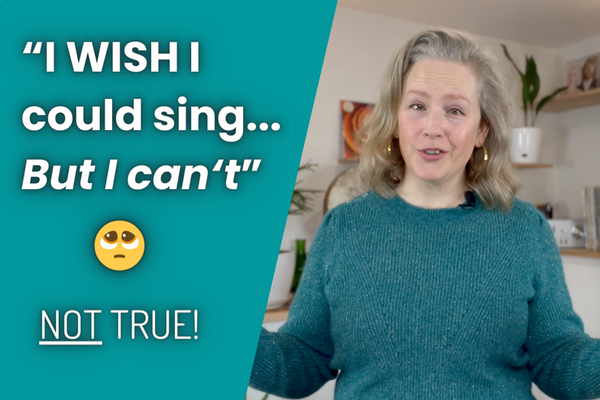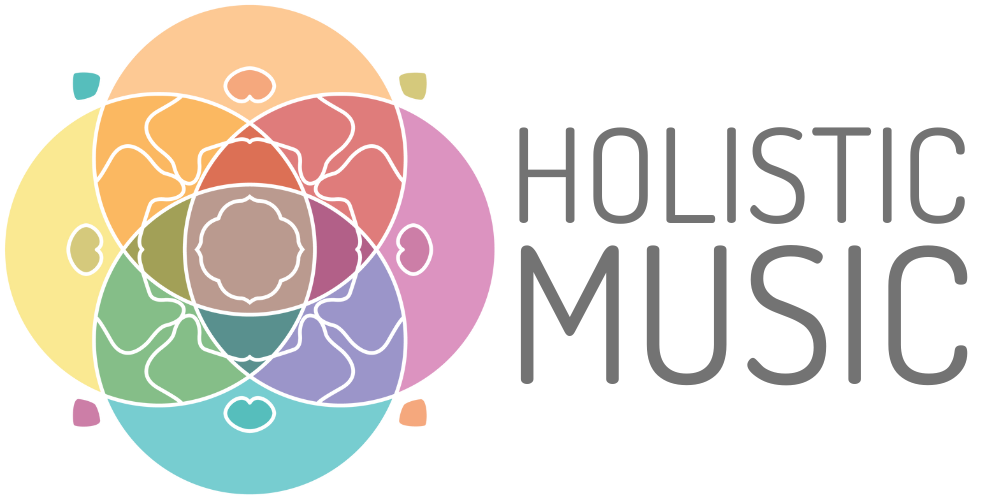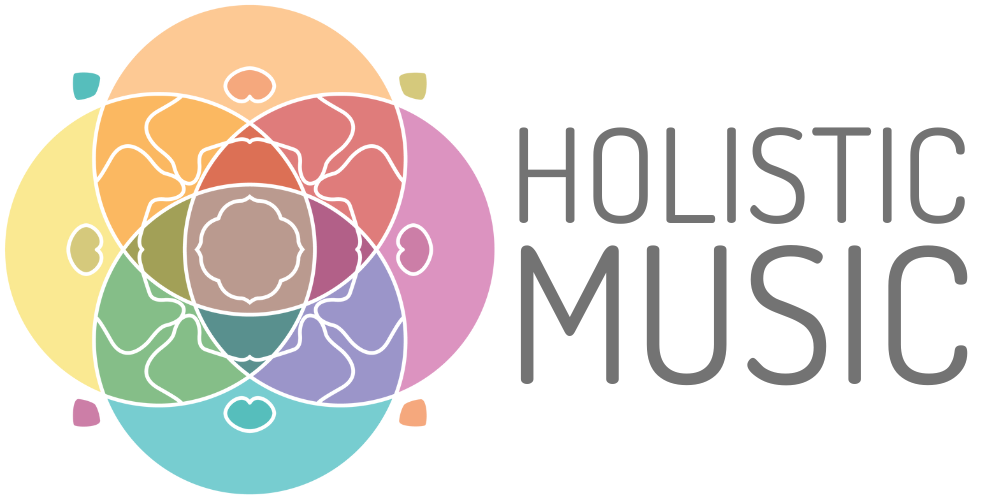
"I WISH I could sing... But I can't 🥺"
"I WISH I could Sing... But I can't" - Why this is NOT true, and how to start.
In this video and blog, I am going to share with you why the idea that you can't sing is not true - and also 4 ways you can develop your inner relationship with sound, so you can reclaim your authentic voice!
Watch the video below, and/or scroll down to read the transcript.
Who was it that told you that you can't sing? Where did you get this idea?
Was it from parents, peers, teachers, school? Singing along to songs in the car and being told to shut up?
It's painful. It's painful to children when they are just trying to express themselves, trying to express their joy and they get shut down.
It's so common and it's tragic. Because your voice is your birthright.
This is an all pervasive myth throughout Western culture, particularly, that only certain people are good enough, only certain people are talented enough, and if you're not talented enough, you need to shut your mouth. You don't get permission.
The most tragic thing of all about this is that we get told this as children when we're still learning. Especially for those kids that don't grow up in a musical environment, they don't listen to their parents singing, they don't listen to a lot of music. They don't learn a musical instrument like piano.
There just isn't the environment in which to learn how to sing and learn how to hear sounds and hear tones and to match them with your voice.
So the problem isn't that you can't sing and that your teachers or your peers or your family are right about that. The problem is that you didn't grow up in an environment where it was encouraged or where you just even had the opportunity to learn.
For the vast majority of people, the ability to sing comes from experience, exposure, and environment. It doesn't come from talent.
And you might say, "Oh yeah, but like someone like Beyonce or Alicia Keys or Celine Dion or Whitney Houston, these big, big singers, they're so talented. I could never sing like them."
That might be true! They may have an extra special ability to sing and to develop their voices, but those voices are not how they first came out. Those voices are highly trained.
And the point of singing is not to sound like someone else. The point of singing is to sound like you. To allow that sound out, to have that expressed, and to just enjoy yourself. To connect to your inner world, to connect to your essence through your voice. It's for you, first.
So I want to share with you the truth about whether or not you can sing. There may be widely varying degrees of natural aptitude and natural ability, and there is a very tiny proportion of the population that actually have a wiring issue in their brain that means that they can't perceive pitch accurately.
But for the vast majority of people, it's not about that. It's about the fact that they haven't been in the environment and they haven't had the opportunity to develop their own inner relationship with sound and with their voices.
And this is something you 100% absolutely can develop so that you have a compass to know where you are, what to aim for, and how to produce the tones and the sounds that you love, that feel good, that feel right, and that ultimately because of all that will sound beautiful.
You might go onto YouTube or you might have singing lessons and do all kinds of exercises that most singing teachers teach, you know, scales, arpeggios, patterns, developing vocal tone, and this is all great, all well and good.
But if your singing teacher is not teaching you how to develop your own inner relationship with sound, then you're not going to find your authentic voice. You're just going to be copying.
The way that we can develop our own inner relationship with sound, the way that I teach, is through four areas of awareness.
The first one is called sympathetic resonance. This is when you are able to hear, for example, a piano playing a tone, and then to be able to hear, a person singing that tone or yourself singing that tone, and you can actually hear the match between them.
What actually happens there is that the frequencies in the sound of one instrument are mingling with the frequencies of sound of the other instrument, and because they're the same, they amplify one another. We can actually feel that in our body.
So to explore these things and to start your journey with your inner relationship with sound, let's try a few things.
[Watch Video to try the exercises with me]
Here are the steps from the video to experience Sympathetic Resonance:
Make a long tone with an instrument, or a voice.
As soon as you've heard the tone - join in. Sing the exact same tone.
As you feel yourself singing the same tone, see if you can sense the feeling of merging, that sense that the sounds are merging together, and this sort of amplification that occurs when that happens.
If you end up being a little off the note, it will feel a bit kind of awkward and a bit tense. But if you adjust and slide your voice up or down a little to find the note you'll feel that locking in feeling that sympathetic resonance, that amplification.
That kind of an exercise really helps us get into that feeling of sympathetic resonance and to just align.
So that's one component of our inner relationship with sound. Another one is called Audiation.
This is the ability to imagine a sound. Just like we can visualize a scene, we can imagine what it might be like sitting on a beach in Bali, for example, if we close our eyes. So audiation is the ability to visualize or imagine a sound.
If you've ever gotten a song stuck in your head, it's just like going around and around and around in your head, you end up singing it, but at some point that song is going around in your head without you singing it sort of just internally, that's audiation. That's your ability to imagine the sound of that song.
Here are the steps from the video to experience Audiation:
This time you're not going to sing anything. You're just going to listen and imagine.
Make a long tone with another voice or instrumnet, but this time don't sing along. Just listen to it.
Stop the sound, and see if you can imagine that sound continuing. You're not singing at all, you’re just imagining it. Simply listen, and then imagine the sound.
Another area of awareness to develop your own inner relationship with sound is what I call The Pitch Ladder.
The pitch ladder is our physical feeling or sensation of where we feel sound in our body when we sing from low to high.
So for the pitch ladder, all we're going to do is we're going to glide the voice up and down.
Here are the steps from the video to experience The Pitch Ladder:
Start by locating the feeling of sound vibration in your body
Place your hands on your chest and say “blah, blah, blah, blah, blah, blah” and so on. Feel the vibration in your chest and hands as you speak.
Now with a hum, glide the voice up and down in pitch, and feel how the sensation of sound moves up and down in the chest, neck, and head.
Now sing one pitch - such as middle C. Feel where that sound sits in your body
Then, sing another, lower pitch - such as the G below middle C. Feel how the vibration of this pitch sits in a different place.
So, these different tones have different locations where you feel the vibration, and all the tones in the scale and your vocal range will have their own spot that you can feel it. This is a really great reference point for refining your pitch and being able to sing more accurately in tune.
The last piece of the inner relationship with sound is The Sound-Feeling Connection.
With the sound-feeling connection, this is about the ways that sound helps us express emotions. It helps us feel emotions and it helps us express them because emotions are felt within the body. You know, we feel like a pang in the chest or a lump in our throat or a heaviness in our guts or lightness in our heads.
We can use this to actually help us create sounds because these feelings create physical changes in the body and that affects the sounds that we make. And it's no coincidence then that the sounds that we make when we feel these feelings help us to express those feelings. That's actually a massive part of expressing through the voice.
So let's explore this.
Here are the steps from the video to experience The Pitch Ladder:
Think of a feeling. It could be sad, angry, calm, nostalgic. A feeling that you'd like to express through sound
Pick one simple expressive word that goes with that feeling (e.g Yay! For happy)
Say this word and feel the feeling as much as you can. Yay! Happiness! Yay! Yay! Really get into the feeling. Allow it to move you. Allow it to come through your voice. You're saying the word from the feeling.
Extend that into a longer vowel. Yaaaaaaaaaay!!
All it requires is a willingness to sort of let yourself go into that feeling and just experiment and explore what it feels like to create a sound from that feeling. This is really the core of what it is that draws us into singing and into music is the ability to let those feelings out through the sound.
So I hope that has helped you to understand that your voice is yours. It's not exercises that your teacher tells you to do, even though those are great avenues for developing your voice.
But it's so much more important at the beginning to develop your own inner relationship with the sound that you're making so that you can have reference points and a scaffolding to help you navigate your way and to find your bearings with where to aim, what to feel, what to, what to notice, what to be aware of while you're singing.
When you develop this in a relationship and all of these really solid reference points, then you'll realize that actually you can Sing! And all of those voices that you heard when you were younger, all of those judgments and attitudes that made you doubtful of yourself and gave you the wrong ideas about whether or not you can sing just weren't true.
They were misguided, and you now have the opportunity to develop a relationship with your voice and to express yourself and to just connect with the joy of singing and have that be a part of your life in whatever way you want it to be.
If you'd like to explore these practices more, check the description below for a link to Sing Studio. You can find out more information about classes that I'll be running, how you can join and have access to this different way of exploring singing and developing your voice.
If you’d like to stay updated and notified of new videos, come over to our YouTube channel and subscribe!
Practice the beauty of sound, and love the sounds you make!

"I WISH I could sing... But I can't 🥺"
"I WISH I could Sing... But I can't" - Why this is NOT true, and how to start.
In this video and blog, I am going to share with you why the idea that you can't sing is not true - and also 4 ways you can develop your inner relationship with sound, so you can reclaim your authentic voice!
Watch the video below, and/or scroll down to read the transcript.
Who was it that told you that you can't sing? Where did you get this idea?
Was it from parents, peers, teachers, school? Singing along to songs in the car and being told to shut up?
It's painful. It's painful to children when they are just trying to express themselves, trying to express their joy and they get shut down.
It's so common and it's tragic. Because your voice is your birthright.
This is an all pervasive myth throughout Western culture, particularly, that only certain people are good enough, only certain people are talented enough, and if you're not talented enough, you need to shut your mouth. You don't get permission.
The most tragic thing of all about this is that we get told this as children when we're still learning. Especially for those kids that don't grow up in a musical environment, they don't listen to their parents singing, they don't listen to a lot of music. They don't learn a musical instrument like piano.
There just isn't the environment in which to learn how to sing and learn how to hear sounds and hear tones and to match them with your voice.
So the problem isn't that you can't sing and that your teachers or your peers or your family are right about that. The problem is that you didn't grow up in an environment where it was encouraged or where you just even had the opportunity to learn.
For the vast majority of people, the ability to sing comes from experience, exposure, and environment. It doesn't come from talent.
And you might say, "Oh yeah, but like someone like Beyonce or Alicia Keys or Celine Dion or Whitney Houston, these big, big singers, they're so talented. I could never sing like them."
That might be true! They may have an extra special ability to sing and to develop their voices, but those voices are not how they first came out. Those voices are highly trained.
And the point of singing is not to sound like someone else. The point of singing is to sound like you. To allow that sound out, to have that expressed, and to just enjoy yourself. To connect to your inner world, to connect to your essence through your voice. It's for you, first.
So I want to share with you the truth about whether or not you can sing. There may be widely varying degrees of natural aptitude and natural ability, and there is a very tiny proportion of the population that actually have a wiring issue in their brain that means that they can't perceive pitch accurately.
But for the vast majority of people, it's not about that. It's about the fact that they haven't been in the environment and they haven't had the opportunity to develop their own inner relationship with sound and with their voices.
And this is something you 100% absolutely can develop so that you have a compass to know where you are, what to aim for, and how to produce the tones and the sounds that you love, that feel good, that feel right, and that ultimately because of all that will sound beautiful.
You might go onto YouTube or you might have singing lessons and do all kinds of exercises that most singing teachers teach, you know, scales, arpeggios, patterns, developing vocal tone, and this is all great, all well and good.
But if your singing teacher is not teaching you how to develop your own inner relationship with sound, then you're not going to find your authentic voice. You're just going to be copying.
The way that we can develop our own inner relationship with sound, the way that I teach, is through four areas of awareness.
The first one is called sympathetic resonance. This is when you are able to hear, for example, a piano playing a tone, and then to be able to hear, a person singing that tone or yourself singing that tone, and you can actually hear the match between them.
What actually happens there is that the frequencies in the sound of one instrument are mingling with the frequencies of sound of the other instrument, and because they're the same, they amplify one another. We can actually feel that in our body.
So to explore these things and to start your journey with your inner relationship with sound, let's try a few things.
[Watch Video to try the exercises with me]
Here are the steps from the video to experience Sympathetic Resonance:
Make a long tone with an instrument, or a voice.
As soon as you've heard the tone - join in. Sing the exact same tone.
As you feel yourself singing the same tone, see if you can sense the feeling of merging, that sense that the sounds are merging together, and this sort of amplification that occurs when that happens.
If you end up being a little off the note, it will feel a bit kind of awkward and a bit tense. But if you adjust and slide your voice up or down a little to find the note you'll feel that locking in feeling that sympathetic resonance, that amplification.
That kind of an exercise really helps us get into that feeling of sympathetic resonance and to just align.
So that's one component of our inner relationship with sound. Another one is called Audiation.
This is the ability to imagine a sound. Just like we can visualize a scene, we can imagine what it might be like sitting on a beach in Bali, for example, if we close our eyes. So audiation is the ability to visualize or imagine a sound.
If you've ever gotten a song stuck in your head, it's just like going around and around and around in your head, you end up singing it, but at some point that song is going around in your head without you singing it sort of just internally, that's audiation. That's your ability to imagine the sound of that song.
Here are the steps from the video to experience Audiation:
This time you're not going to sing anything. You're just going to listen and imagine.
Make a long tone with another voice or instrumnet, but this time don't sing along. Just listen to it.
Stop the sound, and see if you can imagine that sound continuing. You're not singing at all, you’re just imagining it. Simply listen, and then imagine the sound.
Another area of awareness to develop your own inner relationship with sound is what I call The Pitch Ladder.
The pitch ladder is our physical feeling or sensation of where we feel sound in our body when we sing from low to high.
So for the pitch ladder, all we're going to do is we're going to glide the voice up and down.
Here are the steps from the video to experience The Pitch Ladder:
Start by locating the feeling of sound vibration in your body
Place your hands on your chest and say “blah, blah, blah, blah, blah, blah” and so on. Feel the vibration in your chest and hands as you speak.
Now with a hum, glide the voice up and down in pitch, and feel how the sensation of sound moves up and down in the chest, neck, and head.
Now sing one pitch - such as middle C. Feel where that sound sits in your body
Then, sing another, lower pitch - such as the G below middle C. Feel how the vibration of this pitch sits in a different place.
So, these different tones have different locations where you feel the vibration, and all the tones in the scale and your vocal range will have their own spot that you can feel it. This is a really great reference point for refining your pitch and being able to sing more accurately in tune.
The last piece of the inner relationship with sound is The Sound-Feeling Connection.
With the sound-feeling connection, this is about the ways that sound helps us express emotions. It helps us feel emotions and it helps us express them because emotions are felt within the body. You know, we feel like a pang in the chest or a lump in our throat or a heaviness in our guts or lightness in our heads.
We can use this to actually help us create sounds because these feelings create physical changes in the body and that affects the sounds that we make. And it's no coincidence then that the sounds that we make when we feel these feelings help us to express those feelings. That's actually a massive part of expressing through the voice.
So let's explore this.
Here are the steps from the video to experience The Pitch Ladder:
Think of a feeling. It could be sad, angry, calm, nostalgic. A feeling that you'd like to express through sound
Pick one simple expressive word that goes with that feeling (e.g Yay! For happy)
Say this word and feel the feeling as much as you can. Yay! Happiness! Yay! Yay! Really get into the feeling. Allow it to move you. Allow it to come through your voice. You're saying the word from the feeling.
Extend that into a longer vowel. Yaaaaaaaaaay!!
All it requires is a willingness to sort of let yourself go into that feeling and just experiment and explore what it feels like to create a sound from that feeling. This is really the core of what it is that draws us into singing and into music is the ability to let those feelings out through the sound.
So I hope that has helped you to understand that your voice is yours. It's not exercises that your teacher tells you to do, even though those are great avenues for developing your voice.
But it's so much more important at the beginning to develop your own inner relationship with the sound that you're making so that you can have reference points and a scaffolding to help you navigate your way and to find your bearings with where to aim, what to feel, what to, what to notice, what to be aware of while you're singing.
When you develop this in a relationship and all of these really solid reference points, then you'll realize that actually you can Sing! And all of those voices that you heard when you were younger, all of those judgments and attitudes that made you doubtful of yourself and gave you the wrong ideas about whether or not you can sing just weren't true.
They were misguided, and you now have the opportunity to develop a relationship with your voice and to express yourself and to just connect with the joy of singing and have that be a part of your life in whatever way you want it to be.
If you'd like to explore these practices more, check the description below for a link to Sing Studio. You can find out more information about classes that I'll be running, how you can join and have access to this different way of exploring singing and developing your voice.
If you’d like to stay updated and notified of new videos, come over to our YouTube channel and subscribe!
Practice the beauty of sound, and love the sounds you make!




